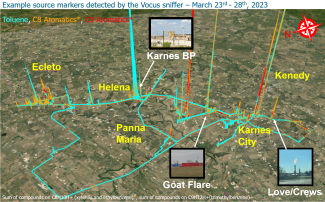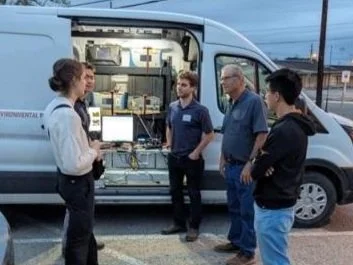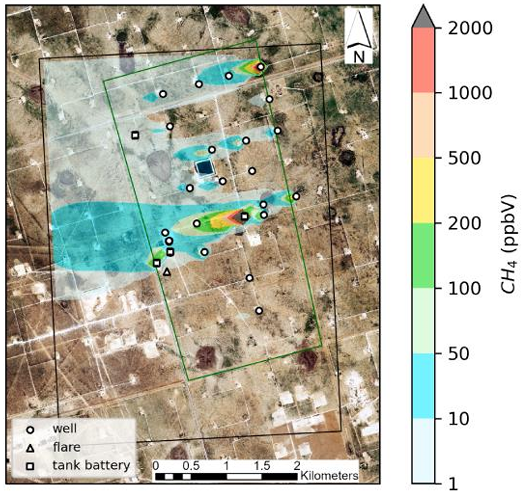
ABOUT
TRACER
We have developed the TRACER (TRAcking Community Exposures and Releases) model, which can assess exposures to air pollutants from unconventional oil and gas development (UOGD) and inform future health studies. The model combines detailed emissions modeling with dispersion modeling to predict concentrations at receptor sites.
The project’s main focus was on the Eagle Ford Shale (EFS) in south-central Texas, a large oil and gas production region that includes the production of dry gas, wet gas, and oil. This heterogeneity of production types makes the EFS a microcosm of UOGD sites throughout the United States. The project was later expanded to also include mobile measurements in the Permian Basin and modeling in the Marcellus Shale oil and gas production region.
Schematic of TRACER model, combining emission with dispersion modeling to predict concentrations at receptor sites.
The emissions model we developed can also be coupled with chemical transport models to evaluate impacts of UOGD emissions more regionally, and to account for impacts of chemical transformation on air quality and human exposure. We have coupled the emissions model to the chemical transport model CAMx to evaluate impacts of UOGD emissions on ozone, a secondary pollutant.
TRACER Goals
-

Collect
Collect stationary and mobile air quality and noise measurements in the Eagle Ford, Texas region.
-

Collaborate
In collaboration with the Collett Team, develop the TRACER model in the Eagle Ford region to generate chemical emissions data from specific UOGD processes.
-

Expand TRACER
Expansion of the TRACER model to the Marcellus region, leveraging data from the separately funded Appalachian Methane Initiative.
-

Evaluate
Evaluate model performance by comparing air quality monitoring data with model predictions in the Eagle Ford region.
-

Apply TRACER
Use TRACER model results to assess spatial and temporal variability of potential community exposures.

